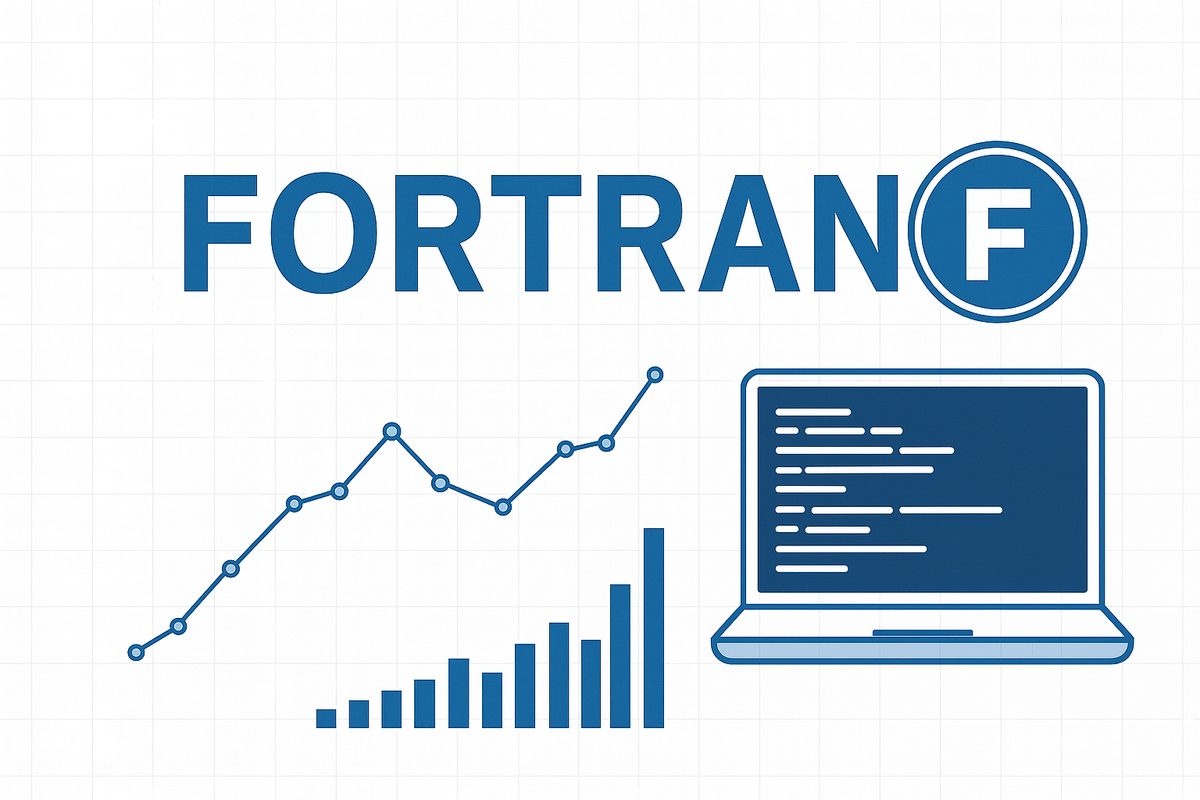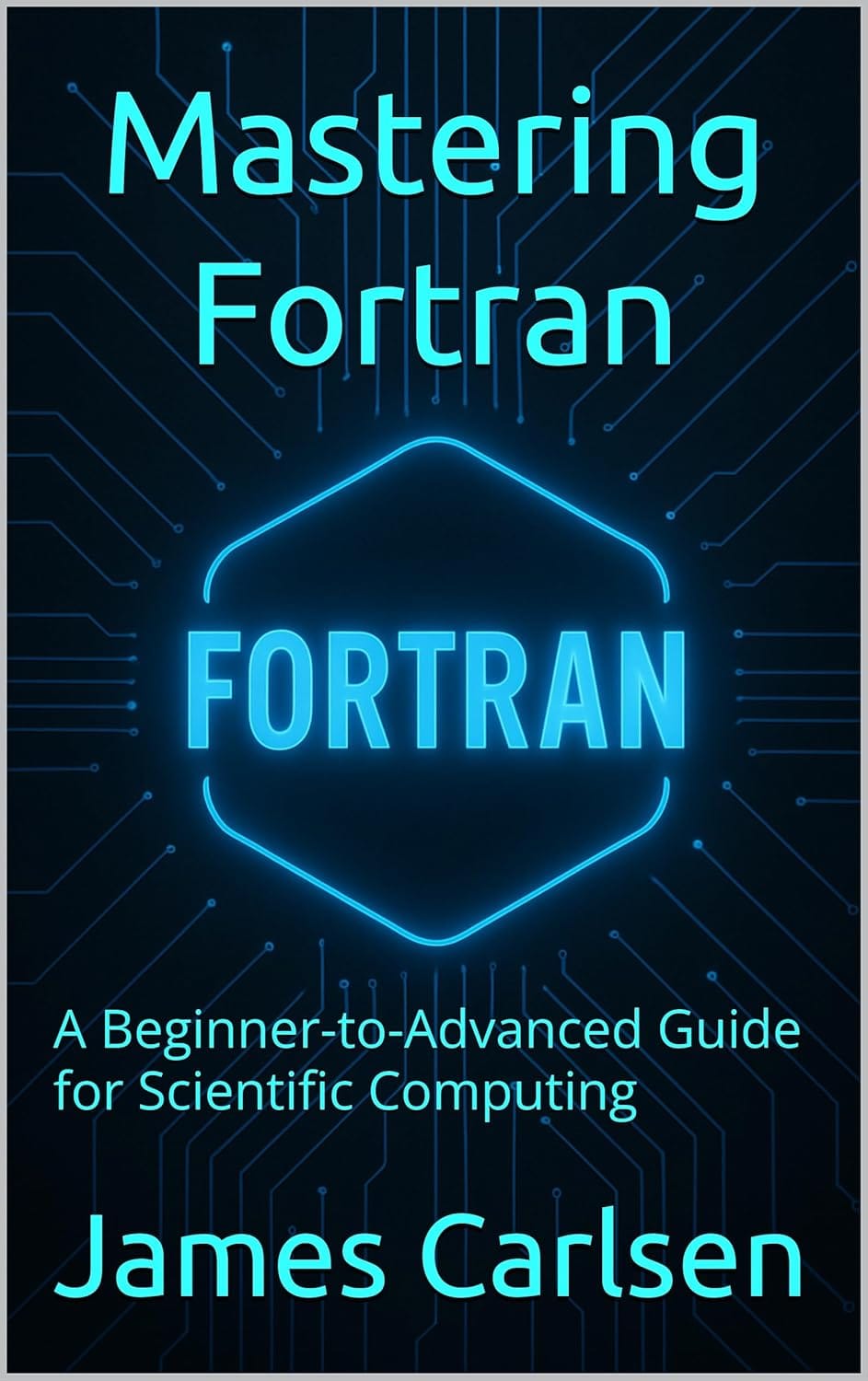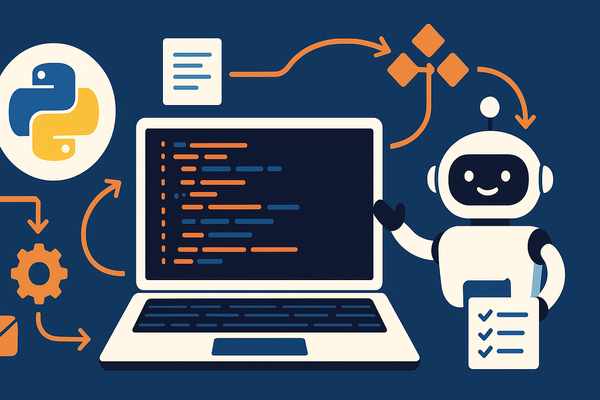Why Fortran Still Matters: A Modern Guide to Scientific Computing

Fortran might be one of the oldest programming languages still in active use, but in the world of high-performance scientific computing, it's far from obsolete. In fact, Fortran continues to power critical systems in weather forecasting, aerospace simulations, computational fluid dynamics, and financial modeling—domains where performance, precision, and reliability are paramount.
So why is Fortran still relevant, and how can you get started with it today? This post offers a practical overview and a taste of what you'll find in Mastering Fortran: A Beginner-to-Advanced Guide for Scientific Computing—your step-by-step guide to unlocking the language's full potential.
What Makes Fortran Powerful for Scientific Computing?
- Optimized for Numerical Performance
Fortran compilers are extremely mature, and its array syntax, loop constructs, and native support for complex numbers allow for blazing-fast numerical computations. - Native Parallelism
Fortran integrates seamlessly with parallel computing standards like OpenMP and MPI, and modern versions support coarrays for simpler shared-memory programming. - Readable, Maintainable Syntax
WithIMPLICIT NONE, modular programming features, and modern formatting, Fortran code is often more readable and maintainable than people assume—especially for scientific teams. - Longevity and Stability
Large, mission-critical codebases written in Fortran decades ago are still actively used and updated. Knowing Fortran means you can contribute to or modernize these systems.
Getting Started: Hello World and Basic Syntax
Here’s a taste of Fortran’s syntax with a simple “Hello, World!” example:
program hello
implicit none
print *, 'Hello, World!'
end program hello
You can compile and run it with:
gfortran hello.f90 -o hello
./hello
Arrays and Vectorized Computation
One of Fortran’s biggest strengths is its array handling. Here’s how to sum a 2D matrix and transpose it:
program matrix_ops
implicit none
real, dimension(3,3) :: A
real :: total
A = reshape([1.0,2.0,3.0,4.0,5.0,6.0,7.0,8.0,9.0], [3,3])
total = sum(A)
print *, 'Matrix A:'
print *, A
print *, 'Total:', total
print *, 'Transpose:'
print *, transpose(A)
end program matrix_ops
Notice how natural the array operations are compared to many other languages.
Modular Design and Reusability
You can use modules and functions to write clean, reusable code:
module math_utils
contains
function square(x)
real :: square, x
square = x * x
end function square
end module math_utils
program use_square
use math_utils
implicit none
print *, '5 squared is', square(5.0)
end program use_square
Parallel Programming with OpenMP
Want to use multiple cores? OpenMP support in Fortran makes parallel loops straightforward:
program parallel_example
use omp_lib
implicit none
integer :: i, n
real :: sum
n = 1000000
sum = 0.0
!$omp parallel do reduction(+:sum)
do i = 1, n
sum = sum + 1.0 / i
end do
!$omp end parallel do
print *, 'Harmonic sum:', sum
end program parallel_example
Compile with OpenMP enabled:
gfortran -fopenmp parallel_example.f90 -o parallel_example
Interfacing with C and Python
Using modern features like ISO_C_BINDING, Fortran can interoperate with C libraries and be wrapped for use in Python (e.g., via f2py).
Example: a C-bindable subroutine that adds two vectors:
subroutine add_vec(a, b, result, n) bind(C)
use iso_c_binding
implicit none
integer(c_int), value :: n
real(c_double), intent(in) :: a(n), b(n)
real(c_double), intent(out) :: result(n)
integer :: i
do i = 1, n
result(i) = a(i) + b(i)
end do
end subroutine add_vec
You can wrap and call this from Python using f2py for seamless integration.
Real-World Case Studies
Mastering Fortran also dives into domain-specific examples like:
- Finite Element Analysis: Assembling sparse matrices for mechanical simulations
- Weather Models: Solving partial differential equations over spatial grids
- Signal Processing: Fast Fourier Transforms using Fortran intrinsics
Each chapter offers annotated code and performance tips drawn from actual systems.
Staying Future-Ready
Fortran is still evolving. The book also covers:
- Upcoming features in Fortran 202X
- Using Flang (the LLVM-based Fortran compiler)
- GPU offloading with OpenACC and OpenMP 5
Conclusion
Fortran is more relevant than ever in domains that demand speed, stability, and massive numerical throughput. If you're a scientist, engineer, student, or maintainer of legacy systems, learning Fortran is an investment in performance and portability.
Sponsored By:




